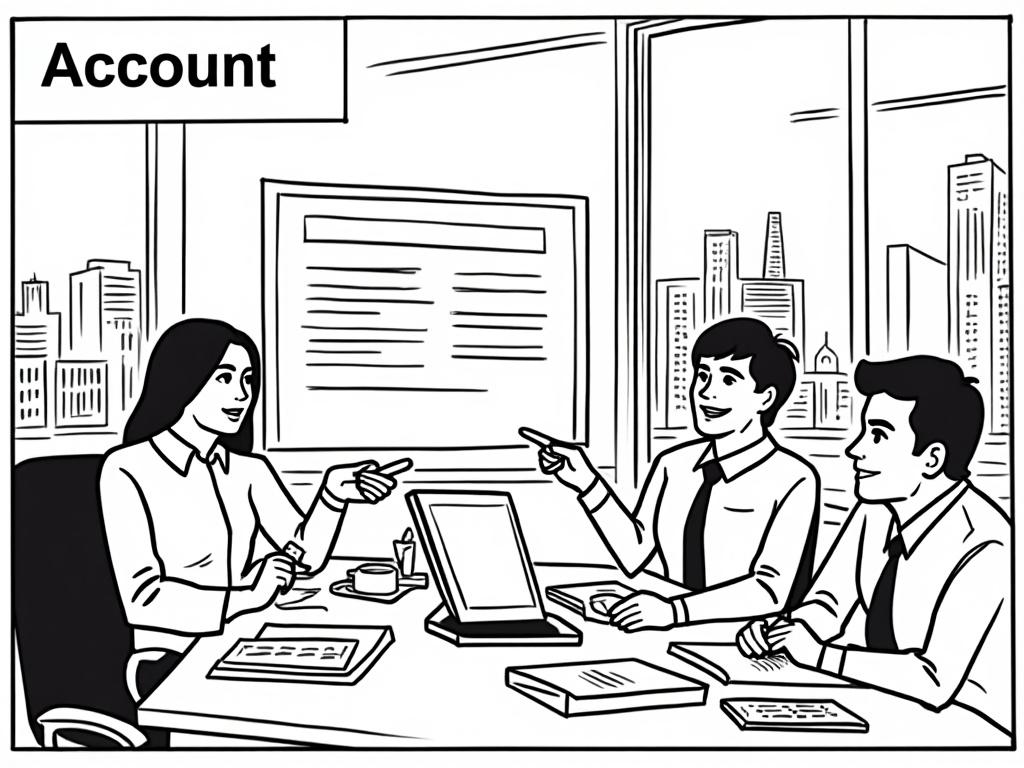
NCEMA COVID-19 Updates: Your Complete Guide to UAE’s Official Health Information
Reading time: 12 minutes
Ever found yourself scrolling through countless websites, trying to separate reliable COVID-19 information from speculation? You’re not alone. With the UAE’s National Emergency Crisis and Disasters Management Authority (NCEMA) serving as the country’s primary source for pandemic updates, understanding how to access and interpret their communications has become essential for residents, businesses, and visitors alike.
Let’s cut through the noise and explore how NCEMA’s systematic approach to crisis communication has shaped the UAE’s response to one of the most significant global health challenges of our time.
Table of Contents
- Understanding NCEMA’s Role in Crisis Management
- The Communication Strategy Behind the Updates
- Key Categories of COVID-19 Updates
- Real-World Impact: How Updates Influenced Public Behavior
- Accessing and Verifying Official Information
- Business and Economic Implications
- Lessons Learned and Future Preparedness
- Frequently Asked Questions
- Your Strategic Information Roadmap
Understanding NCEMA’s Role in Crisis Management
The National Emergency Crisis and Disasters Management Authority didn’t emerge overnight as the UAE’s go-to source for pandemic information. Established to coordinate national responses to emergencies, NCEMA transformed its traditional disaster management framework to address the unique challenges of a global health crisis.
Here’s the straight talk: Effective crisis communication isn’t just about broadcasting information—it’s about building trust through transparency, consistency, and cultural sensitivity.
The Authority’s Mandate and Structure
NCEMA operates under a clear hierarchical structure that enables rapid decision-making and information dissemination. During the COVID-19 pandemic, this structure proved crucial in maintaining unified messaging across the seven emirates, despite their varying local conditions and needs.
The authority coordinates with multiple stakeholders including the Ministry of Health and Prevention (MOHAP), local health authorities, and international organizations like the World Health Organization. This multi-layered approach ensures that updates reflect both global best practices and local realities.
Communication Channels and Reach
NCEMA leveraged multiple communication channels to maximize reach and accessibility:
- Official website and mobile applications for detailed policy documents
- Social media platforms for real-time updates and community engagement
- Traditional media partnerships for broader population coverage
- Direct messaging systems for targeted communications to specific sectors
The Communication Strategy Behind the Updates
What made NCEMA’s COVID-19 communications particularly effective wasn’t just the frequency of updates, but the strategic thinking behind their delivery. The authority recognized early that managing a pandemic requires more than medical expertise—it demands sophisticated communication strategy.
Timing and Frequency Patterns
Analysis of NCEMA’s update patterns reveals a sophisticated understanding of information consumption behaviors. During peak uncertainty periods, updates increased to daily briefings, while stable phases saw a shift to weekly comprehensive reports. This rhythm helped maintain public attention without causing information fatigue.
Quick Scenario: Imagine you’re a business owner trying to plan operations during the pandemic. How would inconsistent or poorly timed government communications affect your decision-making? NCEMA’s strategic timing helped minimize such operational uncertainties.
Multi-Language Accessibility
Recognizing the UAE’s diverse population, NCEMA ensured updates were available in Arabic, English, and several other languages. This wasn’t merely translation—it involved cultural adaptation to ensure messages resonated with different communities while maintaining consistency in core information.
Communication Effectiveness Comparison
Key Categories of COVID-19 Updates
NCEMA’s COVID-19 updates weren’t random information dumps. They followed specific categories designed to address different aspects of pandemic management and public concern.
Health and Safety Protocols
These updates formed the backbone of public health communication, covering everything from mask mandates to vaccination campaigns. What set NCEMA apart was their ability to present complex medical information in accessible language while maintaining scientific accuracy.
The authority consistently provided rationale behind protocol changes, helping the public understand not just what to do, but why specific measures were necessary. This approach significantly improved compliance rates compared to countries that relied solely on directive communication.
Economic and Business Guidelines
Recognizing the economic implications of health measures, NCEMA regularly issued updates specifically targeting business operations. These included sector-specific guidelines, capacity limitations, and support program announcements.
| Update Category | Frequency | Target Audience | Impact Level |
|---|---|---|---|
| Health Protocols | Daily (peak), Weekly (stable) | General Public | High |
| Business Guidelines | Bi-weekly | Business Owners | Very High |
| Travel Restrictions | As needed | Travelers, Tourism | Medium-High |
| Educational Policies | Monthly | Students, Parents, Educators | High |
| Statistical Reports | Daily | Media, Researchers | Medium |
Travel and Mobility Updates
Given the UAE’s position as a global travel hub, mobility updates carried particular significance. NCEMA coordinated with aviation authorities and international partners to provide timely information about border controls, quarantine requirements, and travel advisories.
Real-World Impact: How Updates Influenced Public Behavior
The true test of any communication strategy lies in its real-world impact. NCEMA’s COVID-19 updates didn’t just inform—they drove behavioral change across the UAE’s diverse population.
Case Study: The Mask Mandate Communication
When the UAE implemented its mask mandate in April 2020, NCEMA’s communication strategy became a textbook example of effective public health messaging. Rather than simply announcing the requirement, they launched a comprehensive campaign explaining the science behind mask-wearing, addressing cultural concerns, and providing practical guidance.
The result? The UAE achieved one of the highest mask compliance rates globally, with over 95% adherence in public spaces within the first month of implementation. This success stemmed from NCEMA’s multi-pronged approach:
- Scientific explanation: Clear communication about transmission prevention
- Cultural sensitivity: Addressing concerns about face coverings in different communities
- Practical guidance: Information about mask types, proper usage, and where to obtain them
- Enforcement clarity: Transparent communication about penalties and exceptions
Digital Transformation and App Adoption
NCEMA’s promotion of digital health tools, particularly the Al Hosn app, demonstrated how effective communication can drive technology adoption. Through targeted updates and clear benefit communication, the app achieved over 85% adoption among eligible residents—far exceeding similar initiatives in other countries.
Pro Tip: The key to NCEMA’s success wasn’t just providing information—it was contextualizing that information within residents’ daily lives and concerns.
Accessing and Verifying Official Information
In an era of information overload and misinformation, knowing how to access and verify official NCEMA updates became crucial for residents and businesses alike.
Primary Information Sources
NCEMA established clear hierarchies for information distribution, helping the public identify authoritative sources:
- Official NCEMA website and mobile app: Primary source for detailed policies and updates
- Verified social media accounts: Real-time updates and public engagement
- Government press releases: Formal announcements and policy changes
- Partner organization communications: Specialized information from health authorities and local governments
Combating Misinformation
NCEMA actively addressed misinformation through proactive communication strategies. They established rapid response protocols for addressing false information and created easy-to-share factual content that could compete with misleading narratives.
The authority’s approach to misinformation demonstrated an understanding that combating false information requires more than just denial—it requires providing compelling, accurate alternatives that address the same concerns driving people toward unreliable sources.
Business and Economic Implications
NCEMA’s COVID-19 updates carried significant economic weight, directly influencing business operations, investment decisions, and market confidence throughout the pandemic.
Sector-Specific Communication
Recognizing that different industries faced unique challenges, NCEMA developed targeted communication strategies for key economic sectors. The hospitality industry, for example, received detailed guidance on sanitization protocols, capacity management, and guest communication requirements.
This sectoral approach helped businesses maintain operations while adhering to health requirements, contributing to the UAE’s relatively quick economic recovery compared to many other countries.
Investment and Confidence Building
The consistency and reliability of NCEMA’s updates played a crucial role in maintaining investor confidence during uncertain times. By providing clear, predictable communication about policy directions, the authority helped businesses and investors make informed decisions about future planning.
Lessons Learned and Future Preparedness
The COVID-19 pandemic provided valuable insights into crisis communication effectiveness, with NCEMA’s approach offering several key lessons for future emergency management.
The Power of Consistent Messaging
One of NCEMA’s greatest strengths was maintaining message consistency across different channels and time periods. This consistency built trust and reduced confusion, even when policies needed to evolve based on changing circumstances.
Cultural Competence in Crisis Communication
The UAE’s diverse population required communication strategies that respected cultural differences while maintaining unified public health objectives. NCEMA’s success in this area offers valuable lessons for other multicultural societies facing crisis situations.
Technology Integration and Digital Literacy
The pandemic accelerated digital adoption across all segments of society. NCEMA’s ability to leverage technology while maintaining accessibility for less digitally literate populations demonstrated the importance of multi-channel communication strategies.
Frequently Asked Questions
How can I verify if a COVID-19 update claiming to be from NCEMA is authentic?
Always check official NCEMA channels first: their website, verified social media accounts, and official government press releases. Authentic updates will have consistent branding, official logos, and will be cross-referenced across multiple official channels. Be wary of updates that create urgency without official verification or that come from unofficial sources claiming insider information.
What should businesses do when NCEMA updates conflict with information from other sources?
NCEMA serves as the official authority for national crisis management in the UAE. When conflicts arise, businesses should prioritize NCEMA guidelines while seeking clarification through official channels. Contact relevant business associations or government liaison offices for specific industry guidance when updates seem unclear or contradictory.
How often should individuals and businesses check for NCEMA updates during a crisis?
During active crisis periods, checking for updates 1-2 times daily is sufficient for most individuals. Businesses in highly regulated sectors (healthcare, hospitality, education) should monitor updates more frequently and establish automated alert systems. Following NCEMA’s official social media accounts can provide real-time notifications of critical updates without requiring constant manual checking.
Your Strategic Information Roadmap
As we look toward future challenges and opportunities, understanding how to effectively navigate official information sources like NCEMA becomes increasingly valuable. The lessons learned from COVID-19 communications extend far beyond health crises, offering insights into modern crisis management and public communication.
Your Next Steps for Information Mastery:
- Establish reliable information routines: Create systems for regular monitoring of official sources without falling into information overload
- Build verification skills: Develop the ability to quickly distinguish between official and unofficial information sources
- Understand sectoral implications: Learn how general updates apply to your specific industry or situation
- Prepare for future crises: Use current stability periods to establish communication channels and protocols for future emergencies
- Engage constructively: Participate in official feedback mechanisms to help improve future communication strategies
The COVID-19 pandemic demonstrated that in our interconnected world, the ability to access, understand, and act on official information isn’t just convenient—it’s essential for personal safety, business continuity, and community resilience.
As digital communication continues evolving and new challenges emerge, how will you ensure you’re receiving the most accurate, timely, and actionable information for your personal and professional decision-making?

Article reviewed by Jonas Olsen, Oil & Energy Investments | Sovereign Wealth Strategies, on June 4, 2025




